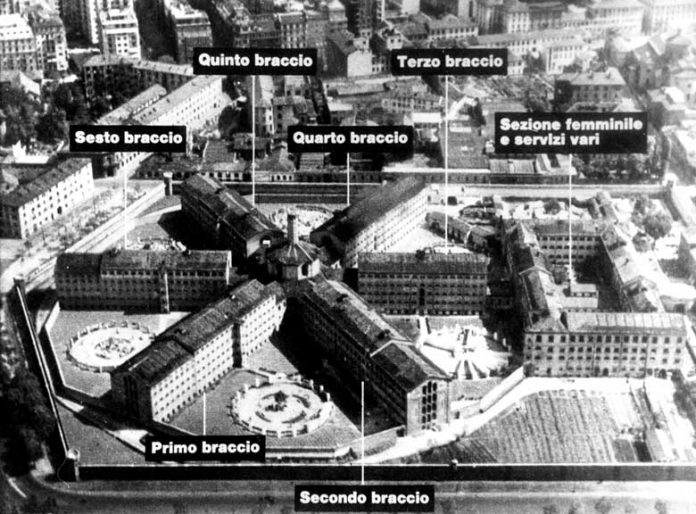As soon as Milan was occupied, on September 10, 1943, the Germans commandeered rays IV and V of San Vittore, the city prison, under the command of Helmut Klemm. The internal guard service was entirely run by the Germans, while the external guard service remained under Italian responsibility. An interrogation room was set up on the ground floor. At first the section director kept a register with all the detainees’ particulars. Later, the imprisoned Jews were registered without name or matriculation, but with a simple progressive number, followed by an E (Jew): 1E, 2E… As the groups left, the numbering began again. The San Vittore prison was used for the collection and detention of Jews captured in Milan and its province, in the Italian-Swiss border area and in the large northern cities, serving as a real transit camp. The cells of Ray IV were used for this purpose, and as the number of arrestees increased, the floors below were also used, eventually shrinking around April-May 1944 to the top floor of Ray V, no longer in cells but in dormitories. Promiscuity was total, the lack of food and adequate sanitation also.
There were periods when prisoners, even if they were elderly or sick, were forbidden to sit or lie down from 7 a.m. until 7 p.m. on pain of beatings and beatings. The warden or his deputy, surrounded by interpreters and employees, would “welcome” newcomers by assaulting with beatings especially the heads of families. Kicks, punches, slaps and mistreatment of all kinds were the order of the day, especially to those who did not want to denounce friends and relatives or where their property was, the confiscation of which was instead crucial to the German command. Sometimes Jewish inmates were awakened in the middle of the night for so-called “gymnastics,” which often consisted of forcing everyone to get on their knees, one in a row to the other along the large corridor on which the cells faced, and then to jump around nonstop until their knees bled or they fainted. If the poor man fainted he would receive a bucket of ice water and be thrown back into the cell soaking wet. Some prisoners died of hardship, beatings and illness. Others committed suicide. The hour of air, provided for by all prison regulations, was never granted: some remained in prison for 4-5 months and did not even once go outside. The isolation of Jews in San Vittore was total. The only ones who had access to their rays were the political prisoners in charge of food distribution and the guards, who often worked to make life less hard for the inmates. Prison doctors were also wary of providing treatment and relief to Jews, but we know that they tried to help especially the weakest.



